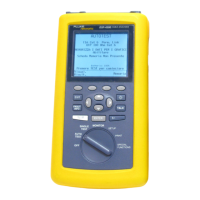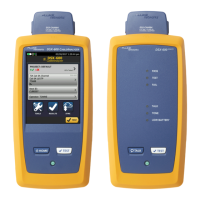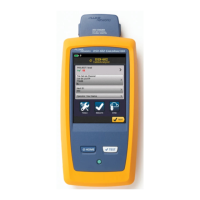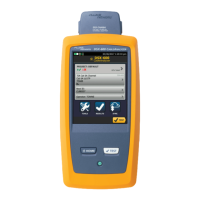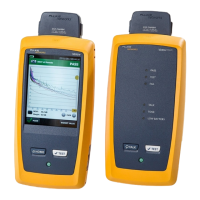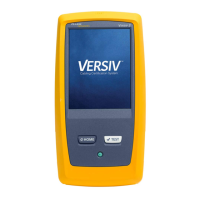DSP-4000 Series
Users Manual
7-20
NVP and Length Measurements
Length measurements depend directly on the NVP value entered for the selected
cable type. To measure length, the test tool first measures the time it takes for a
test pulse to travel the length of the cabling. The test tool then calculates cabling
length by multiplying the travel time by the signal speed in the cable.
Because the test tool uses the length measurement to determine cable resistance
limits, the NVP value also affects the accuracy of resistance measurements.
NVP Calibration
The NVP values specified for standard cables are included in the cable
specifications stored in the test tool. These values are accurate enough for most
length measurements. However, the actual NVP for one cable type can vary up to
20 % between batches because of variations in the manufacturing process.
Therefore, if accurate length measurements are critical to your installation or
testing process, you should determine the actual NVP value for each spool of
cable. Determining the NVP value involves measuring a known length of cable
and adjusting the test tool’s length measurement to match the known length. As
you adjust the length measurement, the NVP value changes accordingly. The
calibration procedure is explained in “NVP Calibration” in Chapter 6.
High-Definition Time Domain Reflectometry (HDTDR)
HDTDR is a measurement technique used to determine cabling length and
characteristic impedance and to locate faults along the cabling. Time Domain
Reflectometry is sometimes referred to as cable radar because it involves
analyzing signal reflections in the cabling.
If a signal traveling through cabling encounters an abrupt change in impedance,
some or all of the signal is reflected back to the source. The timing, size, and
polarity of the reflected signals indicate the location and nature of impedance
anomalies in the cabling.
The test tool applies very short (2 ns) test pulses to the cabling under test. The
short pulses help the test tool resolve smaller anomalies, resulting in more accurate
distance-to-fault measurements and better definition of faults on plots. The test is
run from both ends of the cabling (if the remote is used) for improved visibility of
far-end anomalies.
